Buda Castle: tickets, tours, opening hours and more
The Buda Castle and the neighbourhood surrounding it are two essential visits for anyone travelling to Hungary's capital, Budapest. If you want to find out what you can see and how to see it, read on.
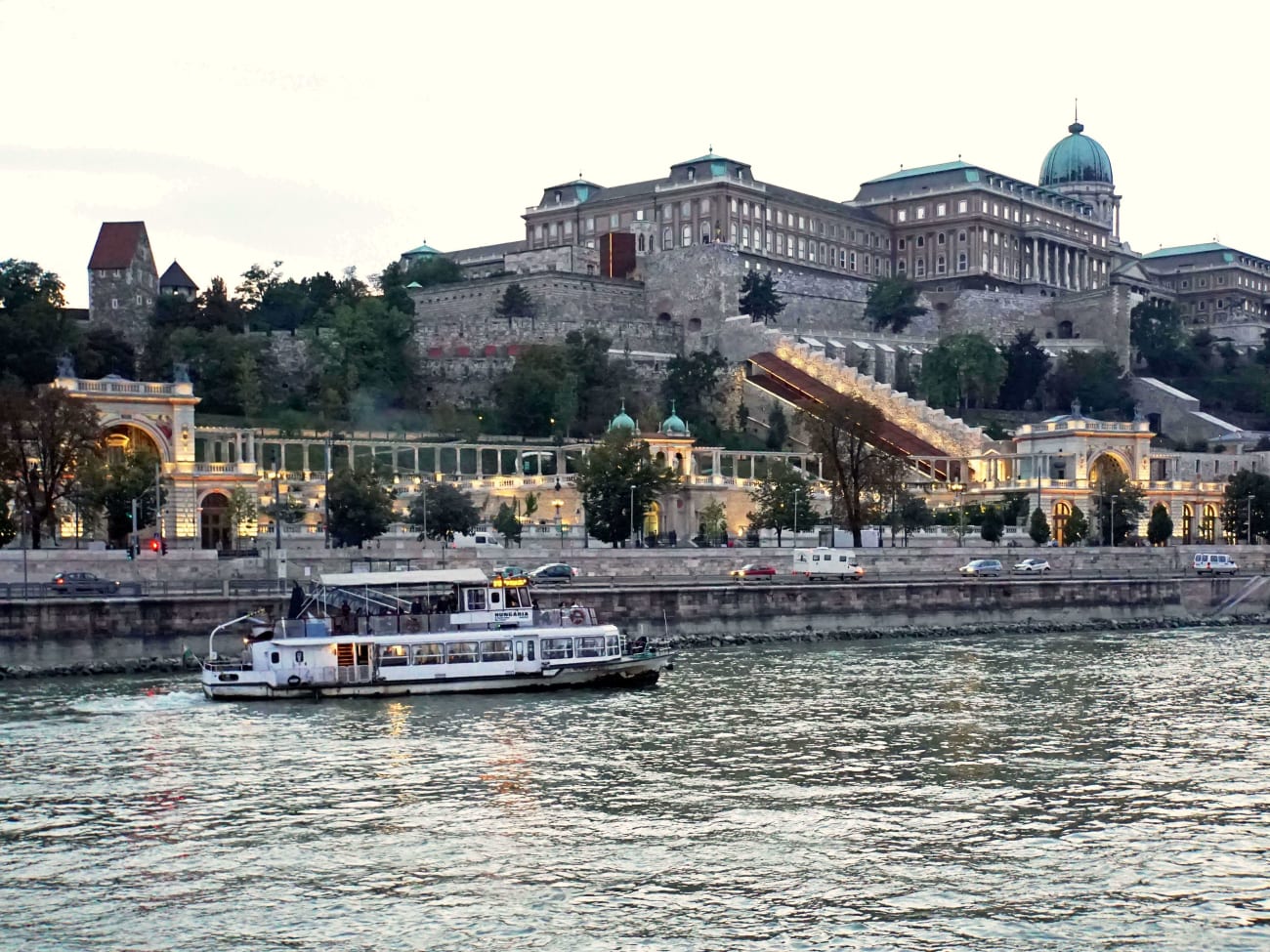
Castillo de Buda y crucero por el Danubio | ©Dennis Jarvis
One of the things that catches the eye when studying what to see in Budapest is its division into two large areas: Pest and Buda. In the case of the second sector, the Buda Castle complex is not to be missed.
The complex itself does not require an entrance fee, although the museums inside it do: the National Gallery, the Budapest History Museum and the Museum of History. Here is all the information about tickets, tours, opening hours and prices for your visit.
Entrance to the Buda Castle complex
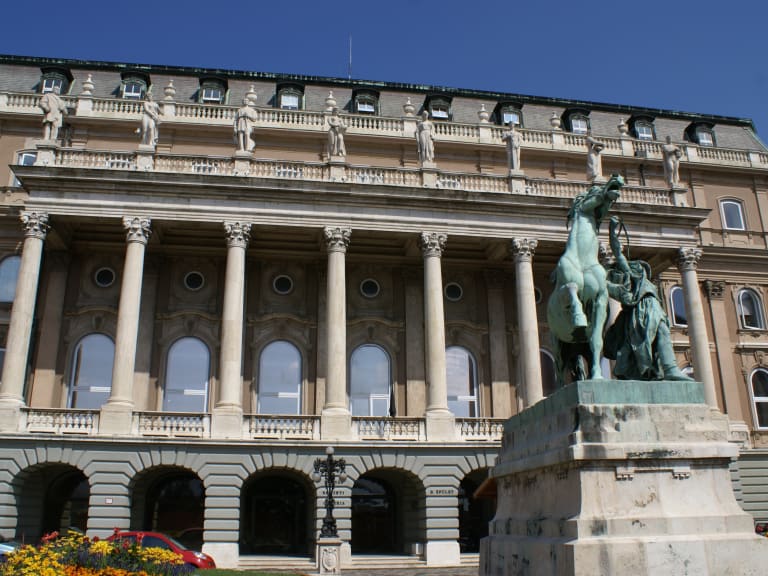
The gardens, the main courtyard and the surroundings of the Castle are free, so you can wander around for as long as you like. However, the three wings of the main building house different institutions which do require an entrance fee to visit. However, you can book the Budapest Card and get discounts or even free admission to some of these institutions.
Here is more information about the different entrances:
- Hungarian National Gallery: around 9 € for the permanent exhibitions, with a 50% discount for young people from the EU between 6 and 26 years old, as well as for over 62 years old. Free with Budapest Card
- Budapest History Museum: about €6.5 per person, with 50% discount for young people and seniors. Free with Budapest Card
- Széchenyi National Library: free admission.
- Buda Labyrinth: just over €8 for adults. Students, teachers and pensioners pay around €6.80 and children under 12 only €1.6. Budapest Card holders pay around €6.20 for admission.
The best option: a guided tour of the Castle and its neighbourhood.
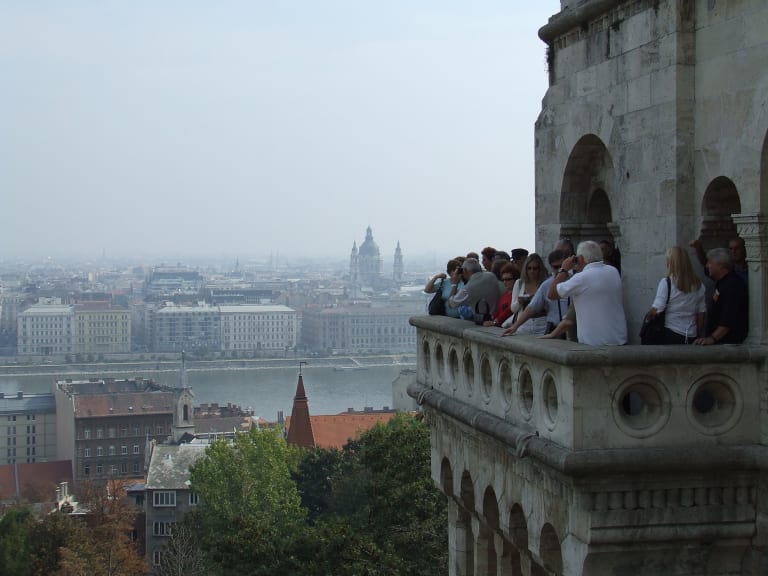
The best way to make the most of your visit to the Buda Castle and the surrounding neighbourhood is to book a tour of Budapest. It should be noted that, although you can book a number of bicycle tours in Budapest, the hills and narrow streets of this area are not suitable for cycling.
The main advantage of guided tours is the presence of an expert guide who will explain the history of the complex, as well as the narrow streets surrounding it. These tours usually cover the entire castle complex, although entrance fees to the museums are not normally included. They also show the historic houses and churches in this part of the city, as well as the remains of a medieval synagogue.
When choosing a Buda Castle tour you should look out for one of the main differences between them: the Matias Church. While some do not include it, others do. My advice is to opt for the latter, as it is a truly impressive monument.
What is usually included in a Budapest sightseeing tour?
A tour of Budapest that includes the Castle District usually lasts about 3 hours, costs from 31 € and is done in an air-conditioned vehicle. It includes several stops:
- Walk through the Castle District.
- Heroes' Square.
- Elisabeth Bridge.
- Andrássy Avenue.
- St. Stephen's Basilica.
- Matthias Church.
- Fisherman's Bastion.
Buda Castle opening hours
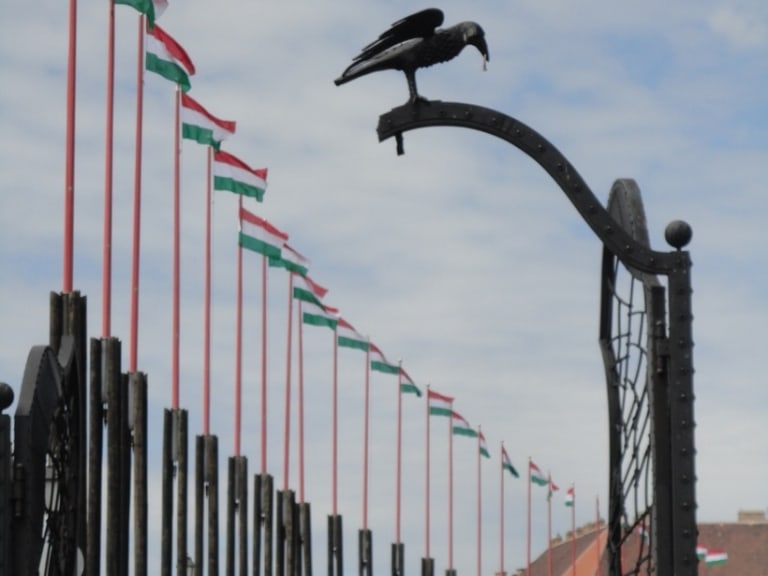
In principle, both the gardens and the courtyards are open 24 hours a day. It is advisable to check if there are any concerts or festivals taking place there, as they are usually paid for.
The National Gallery is open every day except Mondays, from 10am to 6pm. The History Museum has the same opening hours as the gallery. In both cases, the closing time in winter is brought forward to 4 p.m.
If you want to visit the National Library you will have to book in advance by telephone, as it is not possible to visit it on your own. Finally, the Buda Labyrinth is open daily between 9.30am and 7.30pm, as well as at night between 8.30pm and 8am.
Is there a tourist card for the Buda Castle?
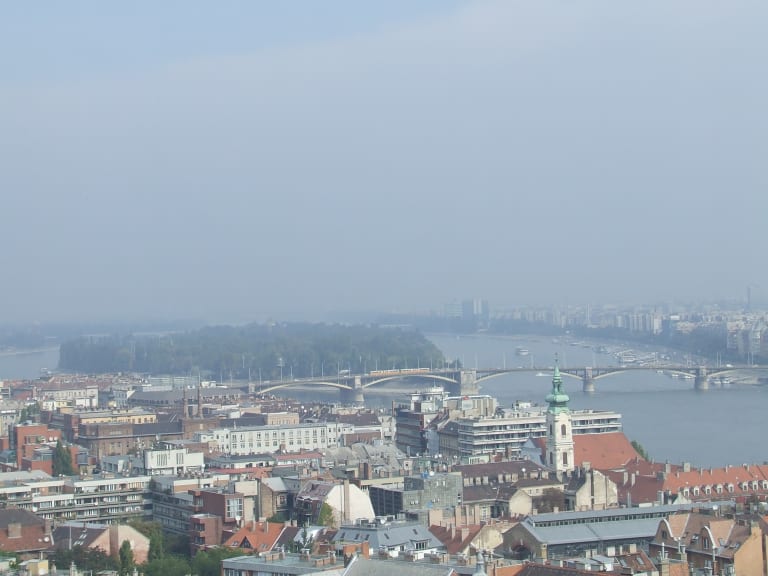
To save money during your visit to the Buda Castle (and other places in the city) you can buy the Budapest Card.
There are three different types of this card, which allows you free or discounted entry to the main attractions of the city. You can choose between a card for 24, 48 or 72 hours, with prices starting at €45.
To calculate whether you should buy the card, you not only have to take into account the price of each museum, but also the price of public transport (included in the card) and a free thermal bath.
What to see in and around Buda Castle
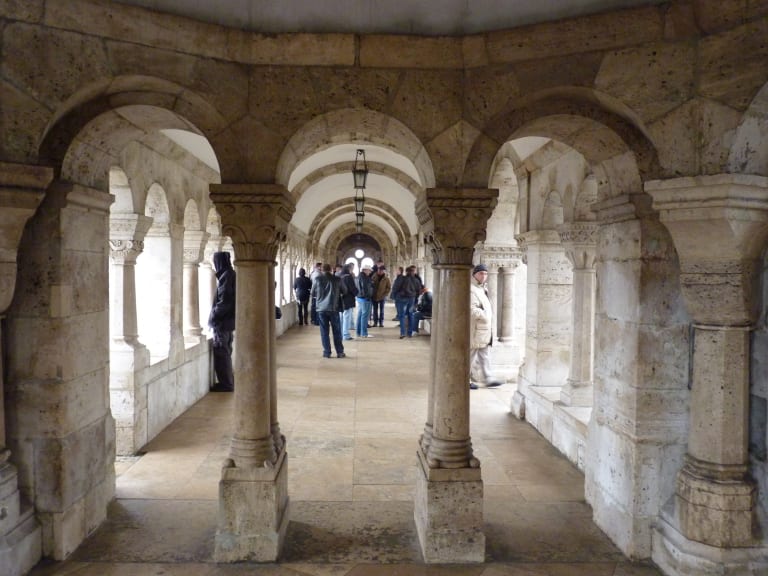
The first thing to know is what you can visit at Buda Castle, also known as the Royal Palace. Given its history, this castle has suffered attacks that meant the destruction of a good part of its structure, although it has always been rebuilt every time this happened.
- Nowadays, the exterior of the castle is rather austere, especially if we compare it to the exuberance of the decorations inside, which are capable of taking the visitor back in time to its greatest splendour. The first thing that stands out is its position within the city: on a hill some 300 metres high with a breathtaking view of the Danube.
- The main building, the castle or Royal Palace itself (so called because it was the residence of the Magyar kings for a time) is made up of several wings built around the so-called Lion's Courtyard.
The vast majority of tours and individual visitors usually enter the grounds via St George's Square, as this is where the funicular stop is located, linking the hill to the Chain Bridge and thus to Pest. To enter you have to go through a beautifully decorated gate dating from the beginning of the 20th century. Next to it you will see a bronze statue of a bird on a pedestal, the symbol of the Kingdom of Hungary.
What to see at Buda Castle
- Lion's Courtyard: it is worth walking through this courtyard to see the exterior of the various museums that are now housed in the Castle.
- National Gallery: this large museum occupies no less than four of the wings into which the palace is divided. Here you can see the works of Hungarian artists from the Middle Ages onwards. One of its most interesting rooms is the former throne room.
- National Library: opposite the gallery is the wing of the palace occupied by the National Library, founded at the beginning of the 800's. It is said that today it contains at least one copy of all the books published in the country.
- Budapest History Museum: The last part of the castle is occupied by the Budapest History Museum. Inside you can learn about the history of the Hungarian capital from prehistoric to modern times. If you go inside, I recommend you don't miss the Gothic Chapel and the Hall of Arms.
Tour the Buda Castle Quarter
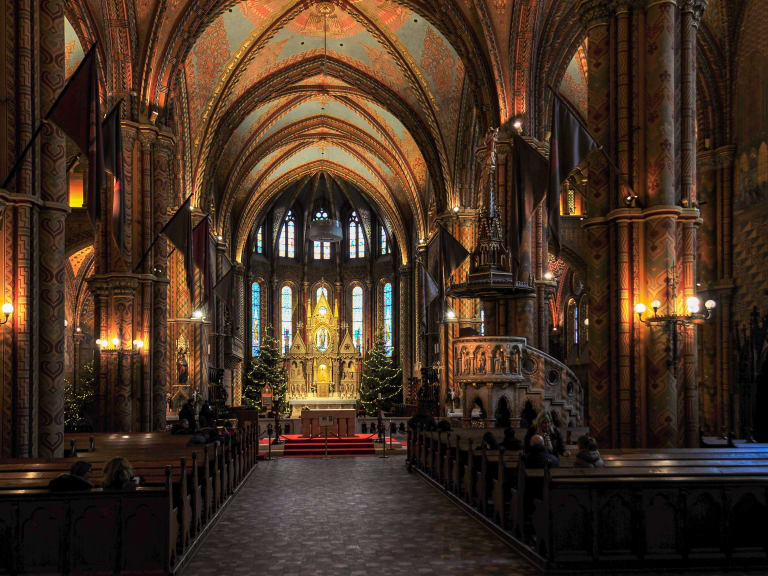
When people talk about visiting Buda Castle, they usually include the neighbourhood around it. In its streets, really interesting, you will see some of the most famous monuments of the city, without forgetting the great views of the Danube that can be seen from some of its viewpoints.
- Fishermen's Bastion: there is possibly no better place to see the whole city from the heights. The building was built on the site of an old fortress and you can admire seven towers symbolising the seven chiefs of the Magyar tribes. You will also see a large statue of St. Stephen.
- Matthias Church: built in the 13th century in gothic style, the continuous remodelling has not made it lose any of its great prestige. Its interior is divided into three naves, in which the decorations of the chapels stand out. Several Hungarian kings were crowned in this temple and, if you are lucky, you may be able to attend one of the concerts that are held here today.
- Vienna Gate Square: located in the upper part of the Buda Castle quarter. It used to be the place where the market was held and nowadays you can see a beautiful gate with a rich ornamentation.
- Buda Labyrinth: One of the great attractions of the area is this labyrinth of caves and natural tunnels that crosses a large part of the hill. In total, there are 4 kilometres of these tunnels, although only the first kilometre can be visited. Exhibitions and guided tours are held inside the tunnels.
If you like contemporary history you should not miss a visit to the Museum of the Rock Hospital and Nuclear Bunker located in the tunnel system of the neighbourhood.
How to climb the Buda Castle
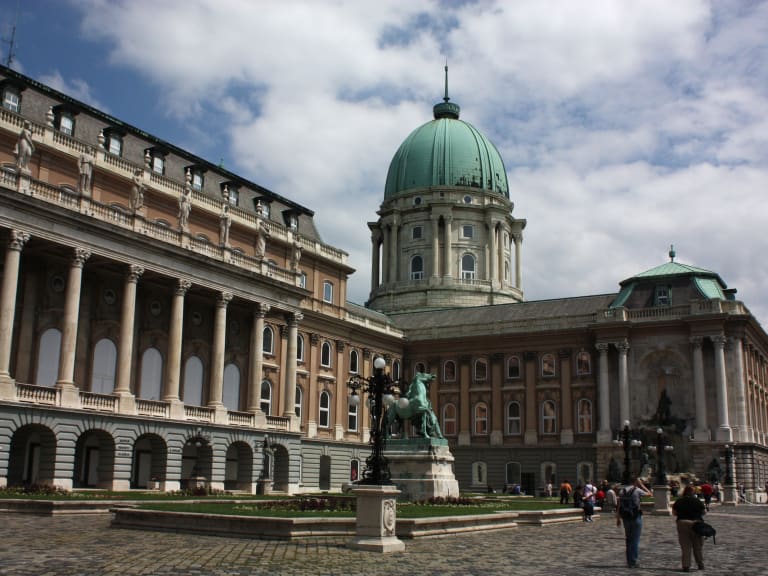
If you want to go up to Buda Castle on your own, there are several ways to get there. My recommendation is to at least walk up or down so that you can explore the streets of the neighbourhood at your leisure. To do this, you can use one of the two main entrances to the Royal Palace:
- The first is reached by going through a decorated gate (located a few metres from the funicular railway station) which leads to the Habsburg Staircase. Climbing this staircase will take you to the Castle courtyard.
- The other option is to reach the Corvinus Gate from Dísz Tér, near the Buda Labyrinth. This gate is easily recognisable by an ornament in the shape of a crow holding a golden ring representing Matthias Corvinus.
In addition to walking up (or down), you can also access the castle by the Budavári Sikló funicular The fare is around €3.30 each way, with a discount if you buy a return ticket. Buses 16, 16A and 116 also drop you off at the Buda Castle so you can start your tour.
